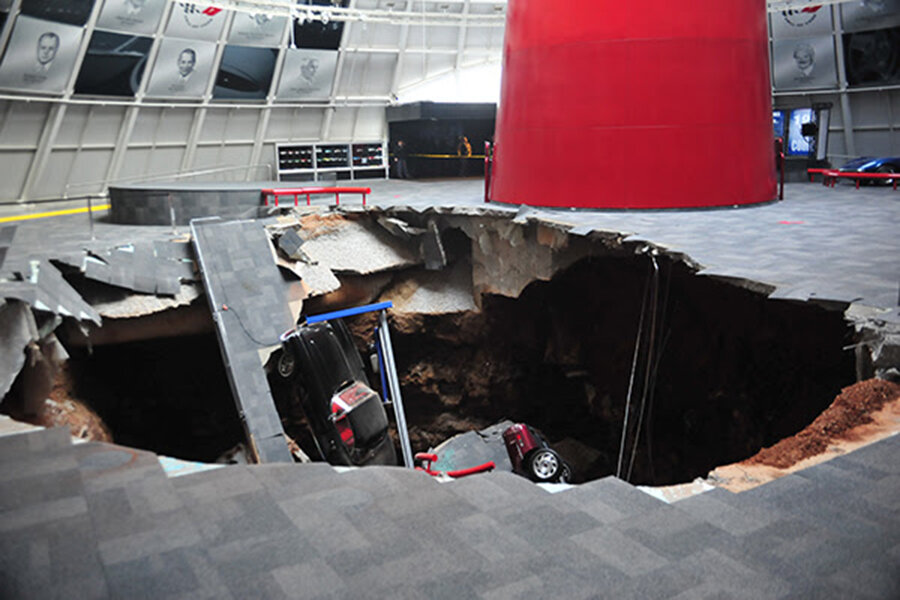Humongous sinkhole opens beneath Kentucky's National Corvette Museum
Loading...
A devastating natural phenomenon has reared its ugly head once again, this time swallowing eight iconic American cars.
A giant sinkhole – estimated to be 40 feet across and 25 to 30 feet deep – collapsed below the Skydome area of Kentucky's National Corvette Museum, gulping eight Corvettes.
"We received a call at 5:44 am from our security company alerting us of our motion detectors going off in our Skydome area of the Museum," the museum noted in a press release. "Upon arrival it was discovered that a sinkhole had collapsed within the Museum. No one was in or around the Museum at the time. The Bowling Green Fire Department arrived on the scene and secured the area."
Out of the eight cars, six were owned by the National Corvette Museum. The officials do not have an exact cost of the damage, but it is quite substantial, Bob Bubnis, communications coordinator at the Museum told the Monitor.
But what caused the portion of the ground to just cave-in?
Kentucky is prone to sinkholes. About half the state sits atop carbonate bedrock, in which karst conditions can develop.
Karst is a type of topography scattered with sinkholes, sinking streams, caves, and springs, which mostly develops on limestone, "but can develop on several other types of rocks, such as dolostone (magnesium carbonate or the mineral dolomite), gypsum, and salt," according to the Kentucky Geological Survey.
State Geologist Jim C. Cobb with KGS, which is part of the University of Kentucky, said that the region has seen a lot of Cover-Collapse sinkholes. These type of sinkholes are typically created when water erodes the underlying limestone bedrock beneath the ground. The more acidic the water, the faster the erosion. Rainwater, which tends to be acidic, dissolves the limestone and causes more erosion of the bedrock. Ice, snow and rainfall further aggravate the problem as they cause erosion of the soil on top of the bedrock layers.
According to KGS, "Dissolution sinkholes form over long periods of time, with occasional episodes of more rapid subsidence or collapse. It is the collapse of the loose cover over the bedrock or soil that causes the problem. Sometimes the collapse will occur in an area with no indication of previous subsidence."
When the soil cover can no longer support whatever it is on top of it, the ground beneath collapses.
The sinkhole in the museum is unique in that it happened inside the museum, where rain, snow or ice couldn't have caused erosion of at least the top layer of soil, Dr. Cobb says.
In general, presence of an unexcavated "closed depression" and a site underlaid with limestone could indicate that a sinkhole is probably present within the region, says the KGS.






